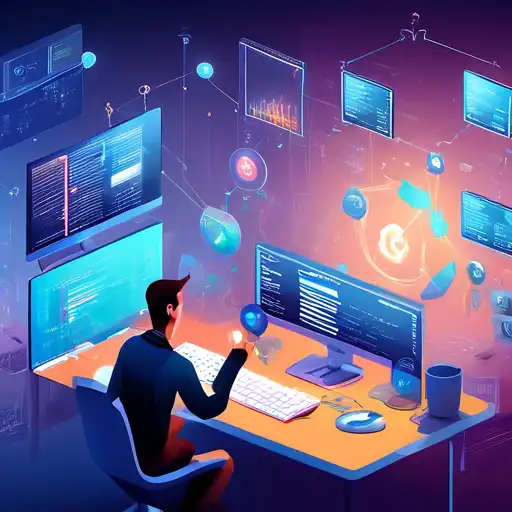Introduction to Software Development Trends
As we navigate through the year, the software development landscape continues to evolve at a rapid pace. Staying ahead of the curve requires an understanding of the latest trends that are shaping the industry. From the rise of artificial intelligence to the adoption of new programming paradigms, this article explores the key software development trends to watch this year.
Artificial Intelligence and Machine Learning
Artificial Intelligence (AI) and Machine Learning (ML) are no longer just buzzwords but have become integral to software development. Developers are increasingly incorporating AI and ML to automate tasks, enhance user experiences, and make applications smarter. Whether it's through natural language processing or predictive analytics, AI and ML are setting new standards in software development.
Cloud-Native Development
The shift towards cloud-native development is undeniable. With the benefits of scalability, flexibility, and cost-efficiency, more organizations are adopting cloud-native technologies. Containers, microservices, and serverless architectures are at the forefront of this trend, enabling developers to build and deploy applications more efficiently than ever before.
Low-Code and No-Code Platforms
Low-code and no-code platforms are democratizing software development, allowing non-technical users to build applications with minimal coding knowledge. This trend is not only accelerating the development process but also bridging the gap between business needs and technical solutions. As these platforms become more sophisticated, their impact on the industry is expected to grow.
DevOps and Continuous Integration/Continuous Deployment (CI/CD)
DevOps practices and CI/CD pipelines continue to be vital for modern software development. By fostering collaboration between development and operations teams, organizations can achieve faster release cycles and higher quality software. Automation tools and practices are key components of this trend, ensuring seamless integration and deployment processes.
Programming Languages and Frameworks
The choice of programming languages and frameworks plays a crucial role in software development. This year, languages like Python, JavaScript, and Rust are gaining popularity, along with frameworks such as React, Vue.js, and Flutter. Staying updated with these technologies is essential for developers looking to remain competitive in the field.
Conclusion
The software development industry is in a constant state of flux, with new trends emerging regularly. By keeping an eye on these developments, developers and organizations can leverage the latest technologies to build innovative and efficient software solutions. Whether it's through AI, cloud-native development, or low-code platforms, the future of software development looks promising and full of opportunities.
